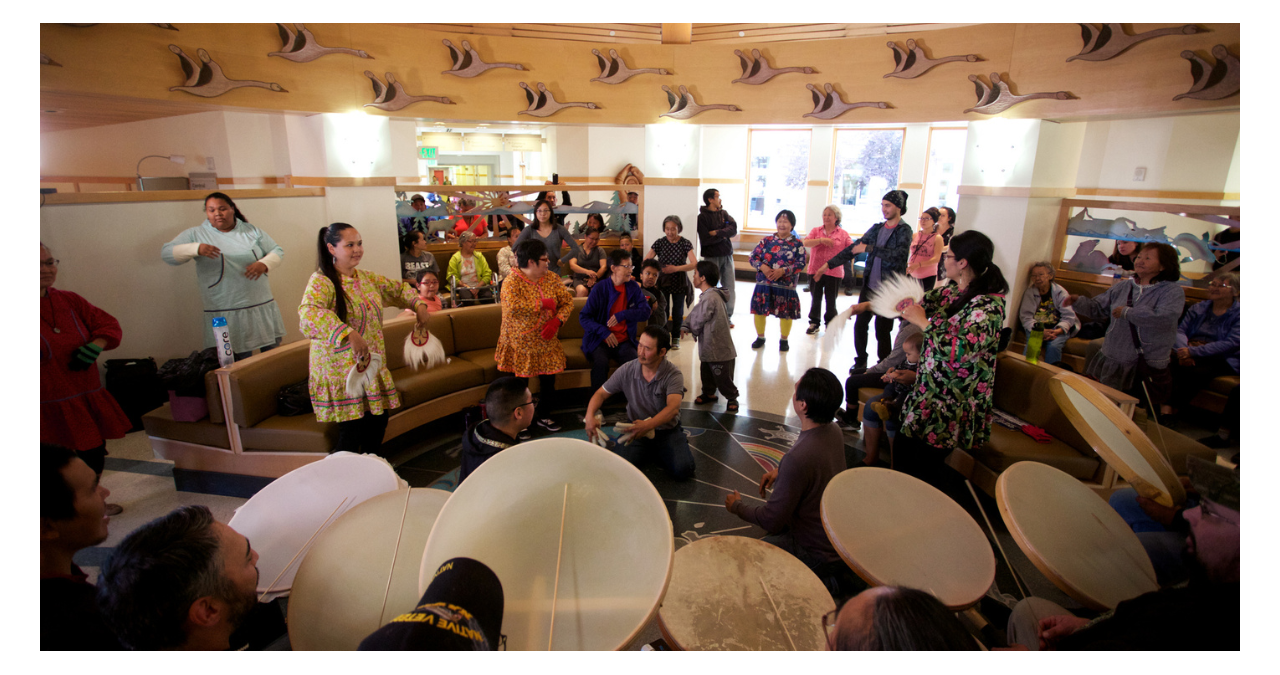
My mother, Donna Hart (Goodlataw), had beautiful, long Indigenous hair and striking Native-American portraits all over our house. She was proud, but I was… ashamed. Growing up in the city of Anchorage, Alaska was rough for me, an Ahtna Athabascan and Menominee Indian. I grew up surrounded with comments about “drunk natives” and homelessness. I grew up surrounded with prejudiced commentary. The stigma about my people ripped me to my core and fed my shame.
As I’ve matured, I’ve realized that much of my shame as a child was impressed on me by uninformed individuals who did not understand the source of our pain or why our people pursue detrimental coping mechanisms for relief. I understand now that there are hundreds of years of grief that Indigenous people must overcome—a loss of our historical homelands, way of life and assimilation. I have realized there is so much to be proud of as an Indigenous person and as an American.
Our Indigenous people are kind and accepting. We have cultures rich in dancing, singing, drumming and regalia that can rival the most beautiful in the world. We treat our elders with respect and courtesy. We’re proud and protective of our homelands and respectful of the bounties it provides—deer, moose, salmon, firewood, rice, sage, sweet grass, water and so much more.
My pride stems from knowing that without our people, this great nation might never have been. That pride is sprinkled with a little bit of heartbreak due to America’s Indigenous history. Each year, I explore the wilderness of Alaska and am in awe of the fact that our people survived for thousands of years without modern amenities. I’m proud of the graceful nature of our people and our growing ability to adapt to a western world. I’m also proud that an Alaska Native woman, Elizabeth Peratovich, was involved in the civil rights movement beginning in the 1940s. And I’m proud that Alaska Native people have been integral to developing an award-winning health system, at which many wish they could obtain care.
I work for the Alaska Native Tribal Health Consortium, which, in partnership with Southcentral Foundation, co-manages the Alaska Native Medical Center—the hospital where I work. ANMC is located in Anchorage, traditional lands of the Dena’ina people, and it is the nation’s largest Indian Health Service facility. ANMC is the referral center for the entire Tribal health system in Alaska, a 182-bed tertiary and specialty-care hospital, and a Level-II Adult and Pediatric Trauma Center. In addition to co-managing ANMC, ANTHC works statewide on water and wastewater projects, construction projects and engineering services; operates a rural utility cooperative; conducts vital clinical and research services; and recently became the sole member of a liberal arts university, all in support of its vision that Alaska Native People are the Healthiest People in the World.
Early in our journey as an organization, ANTHC realized that a lack of temporary housing results in a lack of care for the more than 60% of our patients who have to travel to Anchorage for care. Attached to our hospital is a 62-bed housing facility, and in 2015, ANTHC constructed a 202-bed facility to increase access and to provide safe and convenient housing to our patients. Because of these initiatives, we have doubled specialty clinic access for our patients to receive medical care in a timely fashion. ANTHC’s statewide efforts to support our patients in their home communities also has led to a reduction in communities without running water, research resulting in improvements in clinical protocol and increases in health-related schooling in Alaska.
ANTHC’s strengths are rooted in Alaska Native people, culture and values.
As you observe Indigenous Peoples Day, I hope you learn to recognize the richness and strengths of Indigenous cultures on the lands where you live and work. I hope you’ll consider America’s history and its lasting impact on our nation’s first people. I ask that you find a local Native American museum to learn more about our beautiful people or find a Native American book. If you choose to pick up a book, I might recommend The New Trail of Tears by Naomi Schaefer Riley, or The Great Vanishing Act by Norbert Hill and Kathleen Ratteree. Equipped with this knowledge, we can disrupt stigmas and health disparities, and contribute to making an even better nation.
Tsin’aen.
Jason Hart, FACHE, is senior director, Multispecialty Clinics, Alaska Native Tribal Health Consortium, Anchorage, Alaska.
